These are very bright LEDs. The LEDs are so bright that it hurts to look directly at them. Please take a look at the pictures to get an idea of the intensity. All lenses are clear.
- Standard Size - T1 3/4 5mm
- 10,000mcd brightness
- 2.4V forward drop
- Max current 20mA
LED - Super Bright Yellow Product Help and Resources
Core Skill: Electrical Prototyping
If it requires power, you need to know how much, what all the pins do, and how to hook it up. You may need to reference datasheets, schematics, and know the ins and outs of electronics.
Skill Level: Rookie - You may be required to know a bit more about the component, such as orientation, or how to hook it up, in addition to power requirements. You will need to understand polarized components.
See all skill levels
Comments
Looking for answers to technical questions?
We welcome your comments and suggestions below. However, if you are looking for solutions to technical questions please see our Technical Assistance page.
Customer Reviews
No reviews yet.

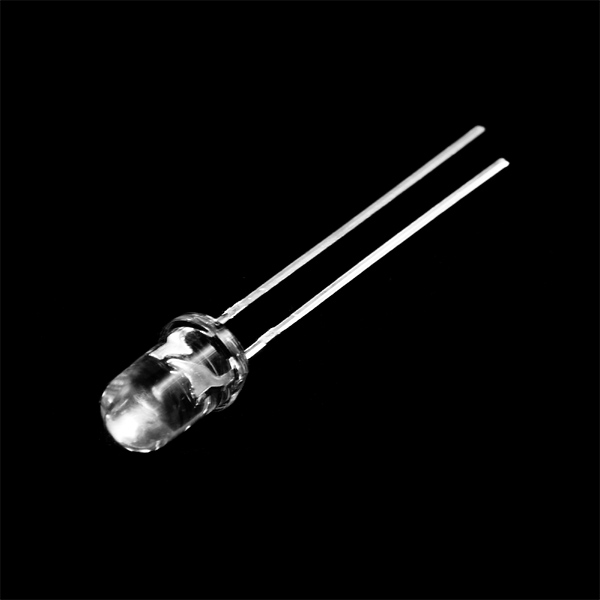

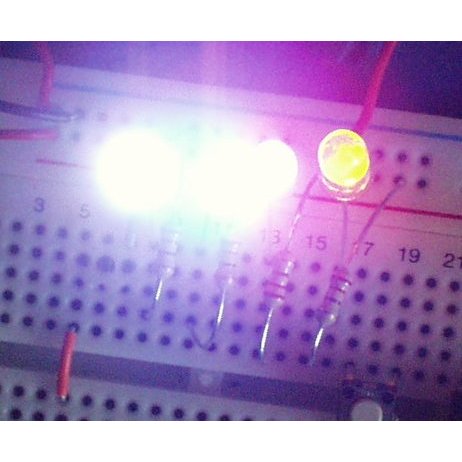
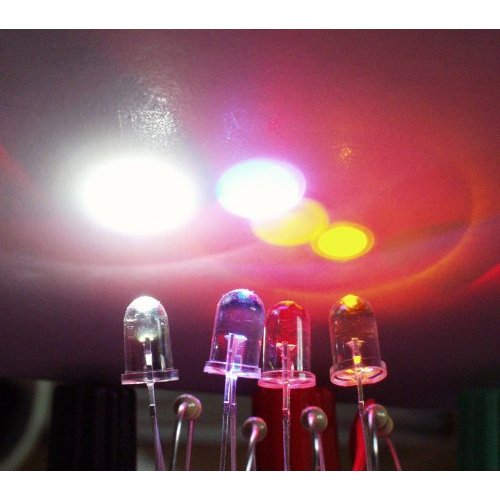
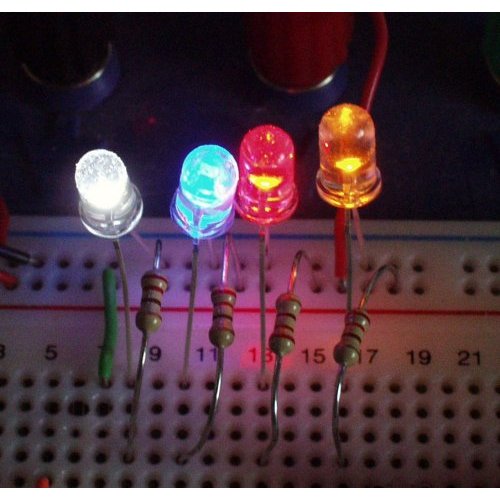
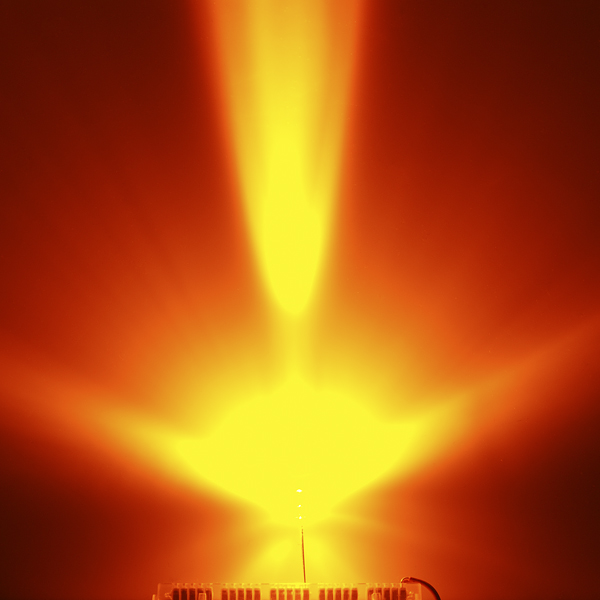
Great LEDs, I used them for my science project. I was trying to figure out which part of the visible light spectrum was best for growing plants, and these did the trick. I found that the blue worked the best. My only complaint, though, is that they are clear, and don't come with any description out of the box, which means you cannot immediatley identify what color they are out of the package. You have to light them up, and then organize them. No biggie though. Great LEDs and very bright when running off 3.6 volts. Also very energy efficient, I had 8 of these running off of two AA for a grand total of over 200 hours, and did not drain the battery very much.
I used these green, yellow, red in a light box for the Toastmasters club. They have a person manually controlling the lights to tell the speaker when to shut up. I cut the lens off the tip of the LEDS at an angle to bend the light more to the front which worked well. Used a Dremel tool with cutoff disk, polished with 600 grit sandpaper then a buffing wheel for final polish. I noted the yellow LEDs at 20 milliamps were nowhere near as bright as the red at 15 ma or the green at 12 ma. Those currents were obtained from a 9 volt battery, with two LEDs in series with a 200 ohm resistor. https://dl.dropboxusercontent.com/u/40929640/TimerProject.mp4
The downside to these lights is that they push all of their light in a 20 degree band. They are also not as efficient as the top-notch stuff on the internet.
For these lights here the data sheet says 10,000 mcd at a 20 deg viewing angle. Calculating the total light output of 0.95 lumens.
However, we found these automotive ones that have 2100 - 3100 mcd at a 120 degree viewing angle, which is ~8 lumens.
So if you want a wider angle or want to pump light into a fibre optic cable then I suggest checking out http://www.kingbrightusa.com/product.asp?catalog_name=LED&product_id=AA3528SES/J4
Just as a disclaimer, I don't have any vested interest in the above company. I just need really bright lights :)
So this same line of supah-brite LEDs in red and green run $0.95 each in unit quantities, or $0.32 each in bags of 25. The yellow ones are out-of-stock right now (I seem to be really lucky like that), but when they return, are the yellow LEDs also available in bags of 25?
Also, a very obscure question. The datasheet claims a wavelength of 585 - 590 nm. If I'm reading the CIE color matching tables right, this would mean that some units (on the 590nm end) fall into the SAE / US DOT definition of "amber" (e.g. for a turn signal) without any filtering, while others (at the 585nm end) do not. There's no mention in the DS - does the manufacturer make any claim of compliance to the SAE/DOT standard?
Cheers!
Wow - now carrying bags of 100 for $20? You guys are fantastic!